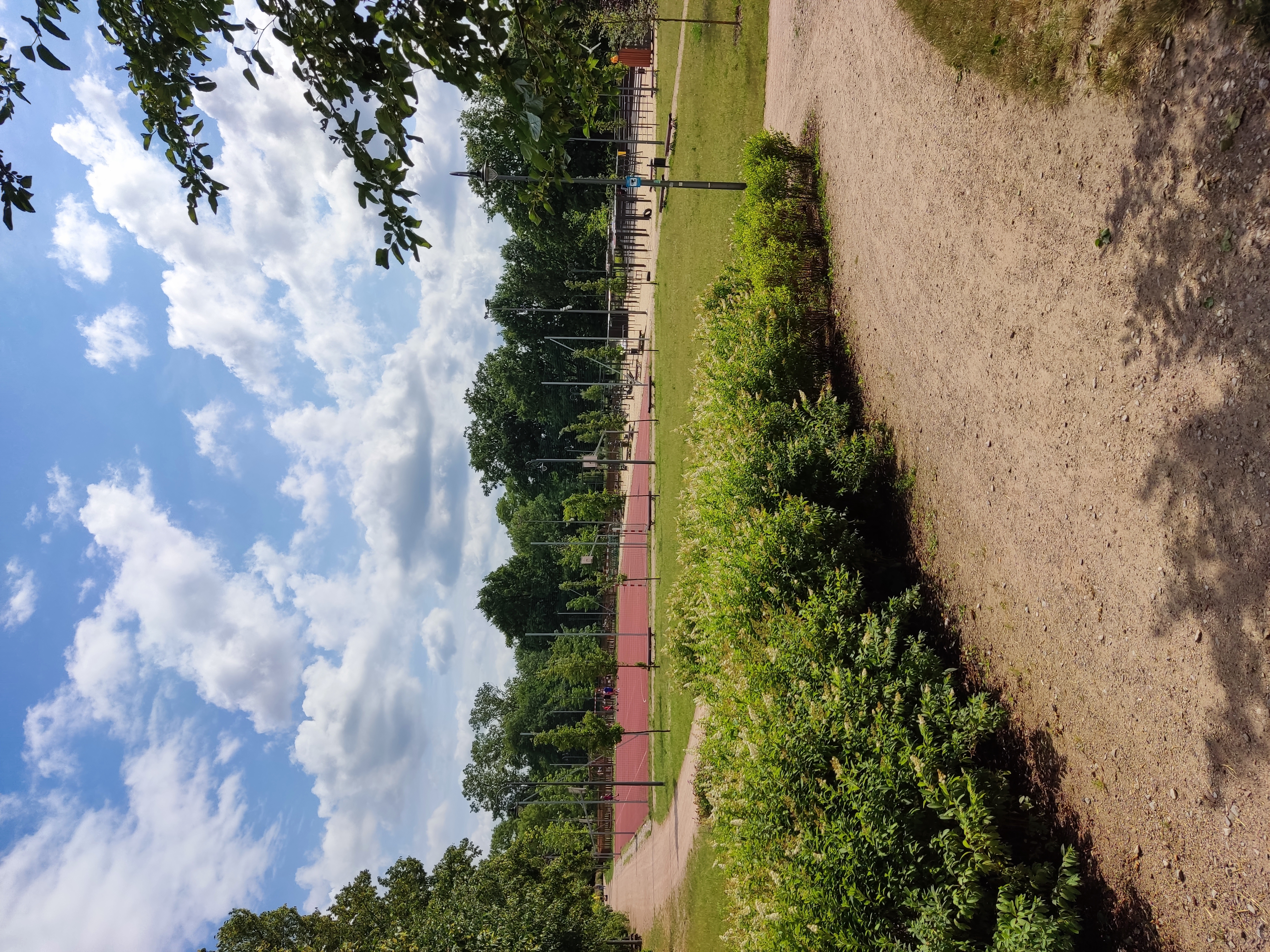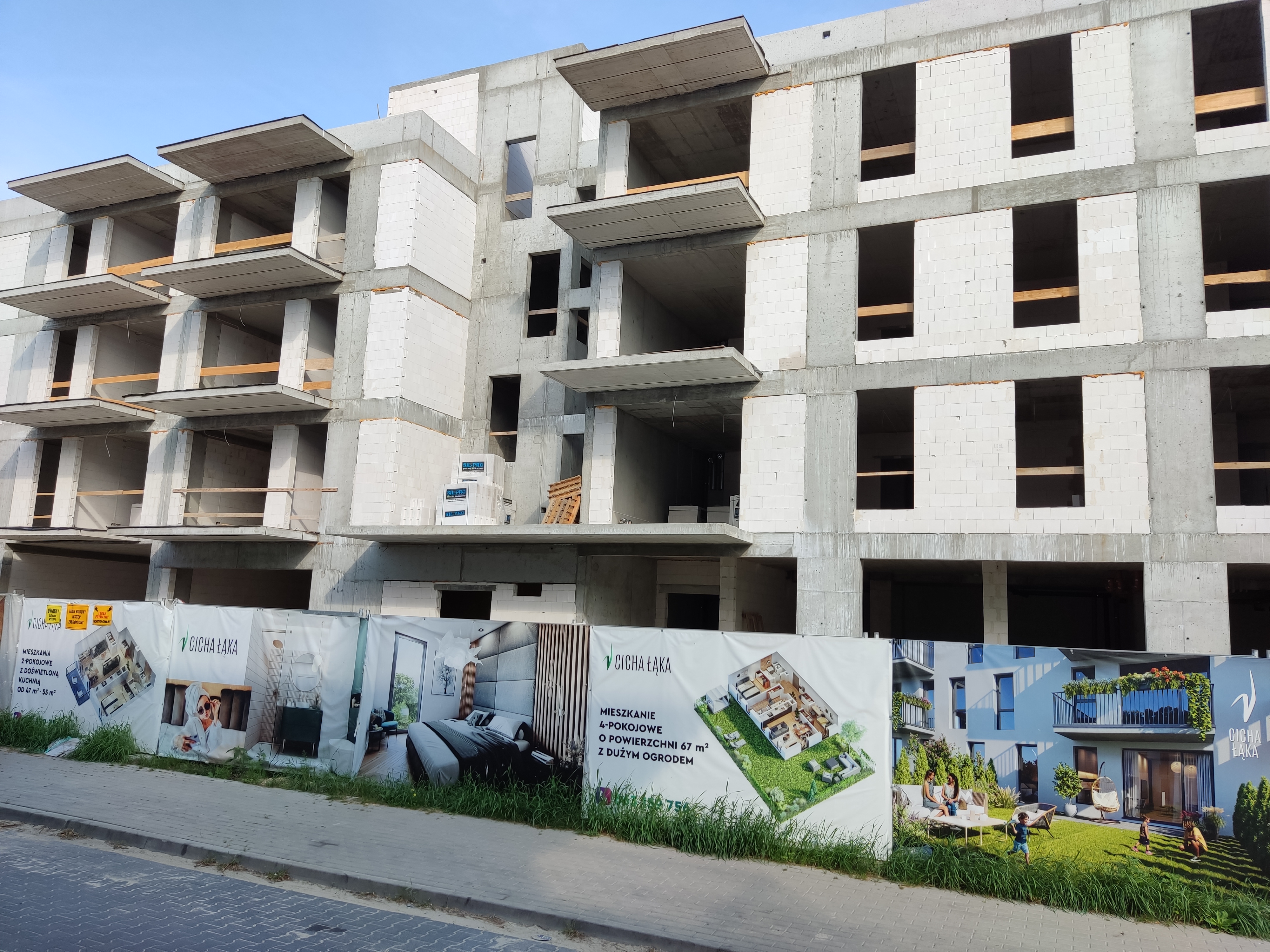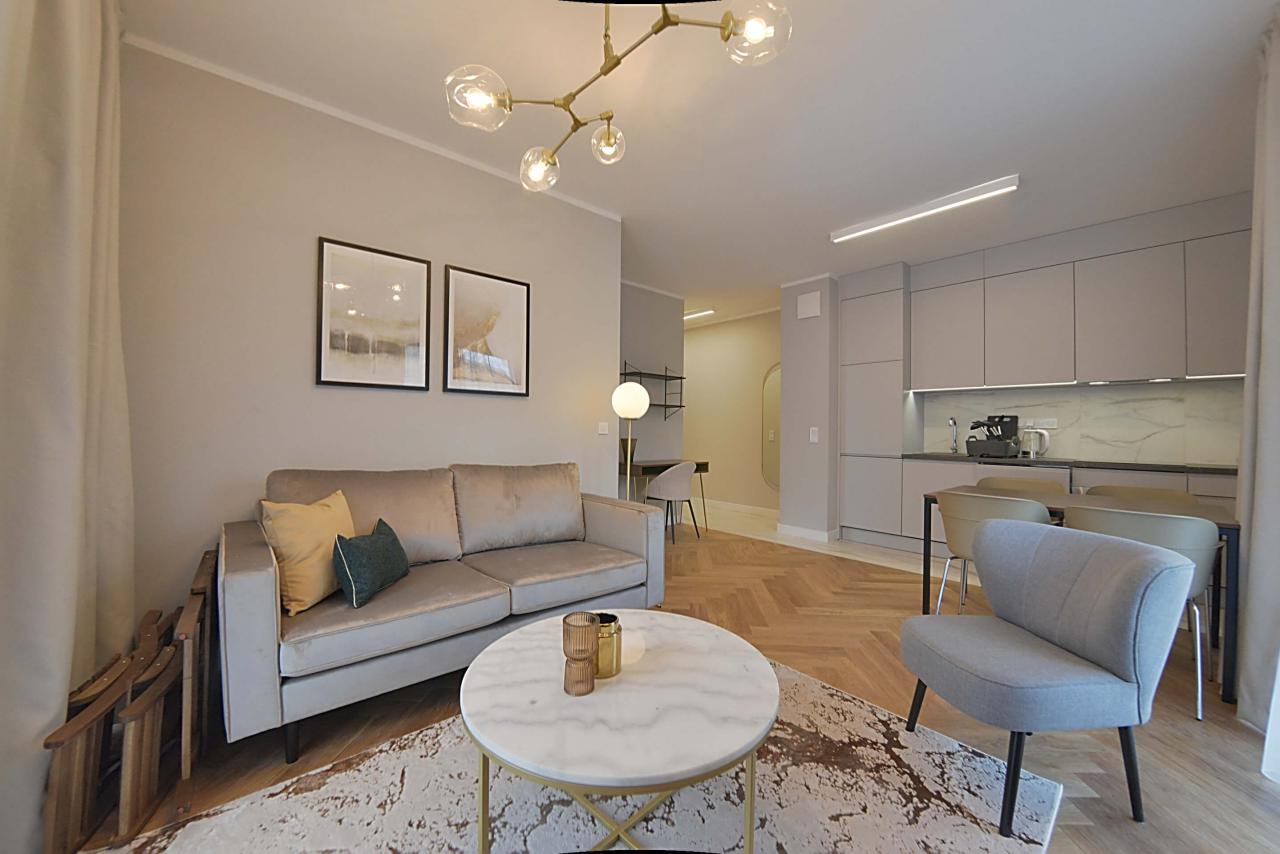Piaseczno

Piaseczno is located in the area of the Piaseczno lowland. This is the marginal part of the Warsaw Basin in the zone of its contact with the Rava Upland. The commune of Piaseczno extends between the Kabacka Forest and the territory of the Chojnów Landscape Park. These forests are important for the regeneration of the air in the metropolitan agglomeration. The commune is included in the Warsaw Protected Landscape Zone, the purpose of which is to protect ecosystems that stand out in terms of the landscape.
There are 61 natural monuments registered in the commune of Piaseczno. This form of protection covers mainly trees (136 pieces) and 1 boulder.
Among the trees, pedunculate oaks predominate, 81 specimens occurring singly or in small groups. Other trees recorded include: silver maple - 32 (alley); common pine - 13 pcs.; small-leaved linden - 4 pcs.; common beech - 1 pc.; field pear - 1 pc.; common ash - 1 pc.; horse chestnut - 1 pc.; white elm - 1 pc.; European larch - 1 pc.
Most natural monuments are located in settlements, almost half of them in Zalesie Dolne.
Boulder Mazur (Głaz Narzutowy "Mazur")
A few years ago, an unstable boulder with a circumference of 17.5 m and 2.5 m in height was excavated in Piaseczno. This is one of the largest red granitoids in Mazovia. This monster was brought from the Scandinavian Peninsula during the Ice Age. After excavations, this magnificent 100-ton natural monument was moved to a prominent place at the intersection of Granitowej and Energetycznej streets in Piaseczno.
The Mazur boulder is the only inanimate object with the status of a natural monument in the municipality of Piaseczno.
In the commune of Piaseczno, 14 parks have been preserved, which have been transformed to varying degrees. Most of them are small manor and park complexes, the rest are monastic complexes. Three parks are included in the register of monuments: the monastery park in Pęcherach and the parks in Piaseczno: in Pólku and the city park in Chyliczkach.
Piaseczno-Chyliczki
Time of creation - XVIII, XIX century. Currently a city park. In Saxon times, on the initiative of Alexander Sulkowski, the headman of Piaseczno, a palace was built, which served as a royal residence. The main element of the residence was a two-story palace building with two outbuildings. The entrance led through the gate, at which two guardhouse buildings were erected. An artificial canal was built on the viewing axis, next to the pond and the gazebo. This 6-hectare baroque garden has been romantically transformed into a landscape park. Since those times, a romantic house has been preserved - the so-called Ponyatovka. The composition of the park today is poorly readable. Single trees have been preserved: lindens and oaks. In 2016, the process of revaluation of the park began to restore its former glory.
Piaseczno–Polko
Manor park with an area of 2.14 hectares of landscape character on the river Ezerka. It occupies a flat area shaped like a square. The park was built in the first half of the 20th century according to the design of Franciszek Szanior. Brick manor house of the middle of the 19th century, rebuilt in the interwar period. It currently houses a restaurant. The architectural and landscape values of the park that have survived to this day, the old trees in the park and the ancient compositional organization created by an outstanding Polish planner and gardener determine the special historical value of the complex.
Of the old elements of the park, a chapel built in 1872 has been preserved. There was also a small pond in the park - now dried up. The whole manor complex of Pulko, consisting of a manor house, a park and outbuildings, forms a kind of complex with a specific spatial structure, well inscribed in the local conditions of the natural environment and the local landscape.
The main compositional layout of the park divides its territory into three parts: a vast clearing that forms the basement floor, an adjoining sparsely forested part, the layout of which is created by picturesquely located groups of trees and single trees. The third part is covered with dense forest. At present, due to unharvested self-sowing, overgrown with palankas and cutting down or dying off some trees, its composition is completely eroded. An important compositional element of the park is a linden alley that runs through the entire park. The park is closed on three sides by an openwork wall of trees, which closes the entire layout, but does not limit the view links with the surrounding landscape. The exception is the northern part, where natural succession has caused distant views to be obscured.
Pechery
Since the middle of the 18th century, the property of the Congregation of the Sisters of Mercy. A preserved 19th century manor house, the garden is a regular functional and decorative institution. Similar monastic complexes can be found in Vulka Pratska and Runova.
Gloskow
Natural-landscape manor park with dendrological and utilitarian features with an area of 9 hectares. The manor house, the gardener's house and outbuildings have been preserved. The entire layout of the 18th-19th centuries, short and long axes of view are marked. Diverse forest stand with natural monuments.
Runow
Former monastery garden of the SS Mercy XVIII-XIX centuries. 1.4 ha, pond 0.3 ha. A typical monastic complex, consisting of a decorative and functional part. A manor house made of larch, surrounded by trees (acacia, birch, willow, alder, poplar) has been preserved.
Wola Gołkowska
Symmetrical manor park in the style of classicism of the 18th century. 3.6 ha, including 0.7 ha of water. Clear layout. It is characteristic that all roads are lined with rows of trees. Plantation of 100-150-year-old trees with natural monuments. Well preserved mansion. Currently the headquarters of the company.
Wolka Kozodawska
An 18th-century landscape park, converted at the end of the 19th century, is located on a slope. The area is 4.95 ha, including 0.15 ha of water. Irregular park. 3 ponds, one alley and a small section of the former grave alley have been preserved.
Wolka Pracka
Naturalistic manor park of the 18th-19th centuries with an area of 3.9 hectares, including 0.1 hectares of water. The manor house and the buildings adjacent to it have been preserved. The park is rich in woody vegetation.
Zlotoklos
Landscape manor park with a geometric layout of the second half of the 19th century. The area is 5.1 ha, including 0.9 ha of water. The main axis points towards the canal and the row of trees that used to grow. The side axes are directed towards the church and the pond, behind the dam. Multi-species massif 150-200 years old with natural monuments. Notable are the double row of lindens, the group of trees near the manor house and the trees near the dam.
Zabieniec
Manor park of the 18th-19th centuries Poorly readable composition. area 5.94 ha, including 0.2 ha of water. The spatial composition of ponds and dams is based on a rectangular projection. Old trees are preserved in small fragments.
Chojnowski Landscape Park (Chojnowski Park Krajobrazowy)
To the south of Piaseczno there are large forest areas of the Chojnów Landscape Park, planted mainly by man. They contain vegetation that has grown naturally there over the centuries.
The Chojnów Landscape Park, together with the protection zone, occupies 5089.5 ha. There are deciduous and mixed forests, as well as oak-hornbeam and tugai forest communities. They are diversified by patches of peatlands found on the islands.
This is an attractive area not only in terms of nature and landscape, but also has historical and cultural value. Here were the bases of the rebels, guerrilla skirmishes took place here. Mass graves of rebels and soldiers can be found in these forests.
Beautiful nature invites to walks.
The Chojnowski Landscape Park, founded on June 1, 1993 by the Governor of Warsaw, is part of the Mazowiecki Landscape Park Complex. Based on the Chojnów forest complex, it is a haven for a diverse fauna and flora of Mazovia. It is protected not only because of its natural, but also historical and cultural values. The purpose of creating the Landscape Park is to preserve, popularize and disseminate these values in the conditions of rational management.
Gorki Szymona
Górky Shimona (Szymon Hills) - sand dunes located in Zalesie Dolny (Zalesiu Dolnym), administratively owned by Piaseczno, are an ideal place to relax from the bustle of the city. Nature lovers are attracted, first of all, by sand dunes, river, forest, lakes, wetlands, hills.
The Shimonov Hills in Piaseczno are low hills covered with sand and covered with old trees, mostly pines. In the dunes, there is such vegetation as sandy and partly carpeted meadows, consisting of short grasses, perennials and mosses. This is an extremely attractive place from the point of view of nature, if only because the inner dunes with vegetation are unique in Europe. In addition, next to it is the bank of the local river Jezerka and the small river Charna. There are also artificial lagoons in the area.
It is also a great place for cycling or walking. There are beautiful ponds surrounded by trees. On the territory there are several campfire sites with benches and a table. There is also a children's playground and an outdoor mini-gym.
Jeziorka River Valley (Dolina rzeki Jeziorki)
Another important natural element is the valley of the Jezerka River, which, together with its tributaries, creates a natural link between the regional range. The winding river bed with lushly overgrown banks gives the landscape a picturesque look. It is planned to create a landscape-type reserve "Valley of the Ezerka River", in which the riverbed of a natural form with a strip of coastal and aquatic vegetation will be protected.
Jeziorka (formerly Jeziorna or Jeziora) - Jeziorka (dawniej Jeziorna lub Jeziora), in the lower reaches Piasechna and Wilanowka, is a left tributary of the Vistula, 66.3 km long and with a basin area of 975 km2 (considered together with the upper reaches of the Charna River, included in the basin Ezerki in 1973). It flows from the Rava Upland through the Warsaw Plain to the valley of the Middle Vistula. The source of the river is located at an altitude of 188 m above sea level near the village of Guta Lutkowska, south of Mszczonova. The upper course flows in a narrow valley occupied by meadows and pastures, which widens after a few kilometers, and at the bottom of it there are complexes of former ponds. After flowing into the right bank of the Kraska, the river changes its course from latitudinal to meridional and below the mouth of the Tarchinka (the largest left tributary) flows to the northeast.
In the middle reaches, on the right bank of the valley, there is a large complex of the Chojnów forests. The course of the river is winding in many places, the channel is rather narrow and not very deep, the bottom and banks are mostly sandy. The Jeziorka flows through an artificially dug channel below the city of Konstancin-Jeziorna into the Vistula River at an altitude of 83.5 m above sea level. In the waters of Ezerka there is a wide variety of fish species (about 20 species), incl. roach, perch, pike, gudgeon, dace, chub, ide, burbot, stickleback, stickleback and bleak, as well as rare rainbow and trout. In August 2001, the Association of Municipalities and Counties of the Jeziorka River catchment was registered. The purpose of the Association is to support the activities of local authorities for sustainable socio-economic development in the area of activity of the Association, and in particular, the protection of the environment in the broadest sense of the watershed of the Jezerka River, where the main tasks will be: stop environmental degradation, continue the process of cleaning water and basin of the Ezerka river and integrated regulation of water and waste water management.
There are five nature reserves in the Piaseczno commune:
Floristic reserve Biele Chojnowskie and four forest reserves: "Las Pęcherski", "Pilawski Grąd" and "Uroczysko Stephana", "Chojnów".
1. Floristic reserve Biele Chojnowskie
The floristic reserve Biele Chojnowskie is located north of Uroczyska Biele. The reserve is crossed by the Piaseczno-Gruets road. It is located in the Chojnow Landscape Park (Chojnowskiego Parku Krajobrazowego). Founded in 1979, the area of the park is 14.1 hectares. It covers the forest area in the valley of the Ezerka River and the areas adjacent above.
Designed to protect the rich habitats of Pomeranian honeysuckle (Lonicera periclymenum), a coastal plant that is a natural feature of unknown origin in Mazovia. Fragments of natural alluvial forest are also protected in the reserve.
2. Forest Reserve Las Pęcherski was established in 1989 on an area of 14.99 ha. It is located in the Pęchery tract on the territory of the Chojnowsky Landscape Park (Chojnowskiego Parku Krajobrazowego). The border of the reserve runs along a dirt road connecting the village of Grochova with the Yazgazhev-Gruets road.
The reserve protects oak-hornbeam forest complexes, close to natural, supplemented by mixed forest with 120-150-year-old pine. It is distinguished by a variety of species of trees, shrubs and undergrowth. The reserve is one of the least transformed areas of the Chojnów forests.
3. Reserve Pilawski Grąd - a forest reserve located on the eastern side of the road connecting the village of Orzeszyn with the road Piaseczno-Góra Kalwaria. It is part of the Chojnowski Landscape Park (Chojnowskiego Parku Krajobrazowego). Established on July 4, 1984 on an area of 4.04 hectares.
Created to preserve natural plantations of typical and low-growing oak-hornbeam forests with monumental specimens of English oak. There are single specimens of common beech, located outside its natural range, as well as pine, common hornbeam, white acacia, drooping birch and common ash. Forest anemone, lily of the valley, two-leaved lily of the valley, hare sorrel, yellow warbler, large-flowered chickweed and many-flowered quinoa grow in the undergrowth.
4. Reserve Uroczysko Stephana - forest nature reserve. Founded in 1989 on an area of 59.15 hectares. The reserve is located on the territory of the Chojnowsky Landscape Park (Chojnowskiego Parku Krajobrazowego). The purpose of protection is to preserve well-developed plantations of natural origin and landscape features. Protects complexes of mixed coniferous forests with a predominance of pine, pedunculate oaks, linden, birch and high oak-hornbeam forests. In the reserve, attention is drawn to the richness of shrubs, such as hazel, mountain ash, euonymus, buckthorn and apple tree driftwood. Among the plants you can find club moss, columbine, martagon lily and peach bell. The name of the reserve comes from the name of the forester, a Hungarian by origin, Victor Stefan, who in the 19th and 20th centuries managed the Kaback and Chojnov forests, leading an exemplary economy here.
5. Chojnów Forest Reserve - a forest reserve located about 600 m east of the national road 79 Piaseczno - Góra Kalwaria. It is located on the territory of the Chojnowski Landscape Park (Chojnowskiego Parku Krajobrazowego). Area 11.84 ha. Founded in 1979
The main purpose of creating the reserve is to preserve the oak-hornbeam forest, which reaches the age of 160 - 170 years. The reserve stands out in the forest landscape with the remnants of natural vegetation. Thanks to the preservation of the old forest stand, good conditions for nesting of many bird species have been created here. The presence of a protected martagon water lily in the undergrowth deserves special attention.
Lasy Chojnowskie
Lasy Chojnowskie belong to the Chojnow Forest Inspectorate, which covers the area on the left bank of the Vistula, south and southwest of Warsaw. They are almost entirely located in the Piaseczno area. The area of state forests of Lesnichestvo is 10,389.38 ha.
The largest forest complexes such as Chojnów (2166.01 ha), Łoś (750.86 ha), Pęchery (507.77 ha), Biele (332.24 ha), Obory (424.87 ha), Sękocin (565, 36 ha), Magdalenka (508.24 ha). The most important forest-forming species, occupying the largest percentage of the total forest area, are: pine (74.1%), oak (9.1%), birch (8.6%) and alder (5.6%). The total share of other species is 2.6%. On the north side, the Chojnów Landscape Park borders on the fish ponds of the Experimental Fishery Station in Żabieńcu, which belongs to the Institute of Inland Fisheries in Olsztynie.
Lasy Chojnowskie are protected by Chojnowskiego Parku Krajobrazowego.
The Chojnów forest complex is a large, but fragmented area, which, however, forms one natural whole. Due to relatively fertile, although light sandy and sandy loamy soils, deciduous and mixed forest stands are found here. In addition to fresh forests and predominantly mixed forests, there are also forest communities of oak-hornbeam and floodplain forests. Among the deciduous species, the following prevail: English oak, common hornbeam, drooping birch, poplar, aspen, black alder, less often small-leaved linden, European ash, English elm and European beech, and among conifers, Scotch pine dominates, supplemented in some places by Norway spruce and European larch. . The most valuable parts of the forest are protected as reserves, and old and magnificent trees are recognized as natural monuments.
Forest complexes are diverse insular, peat-bog areas with their characteristic flora. A natural feature of peatlands are the so-called sedges. Meadows and pastures adjacent to the forest complexes are semi-natural vegetation, and grazing and mowing control the growth of trees and shrubs. Particularly noteworthy are protected plants, which are rare in Mazovia. Quite monotonous, due to the flat nature, the landscape of the park is enlivened by small, up to 10 m, hills in the form of internal dunes, mainly in the area of Pilava, Charnovo, Slomchin and Konstancin. Especially beautiful accents in the landscape are the valleys of the Jezerka and Zelena rivers, as well as ponds and disappearing swampy lakes. The winding channel of the Jezerka with lushly overgrown banks, often with steep slopes, is a frame for the river meandering along the bottom. More than 20 species of fish live in the waters of the lake.
Forests, thickets, meadows and interforest lakes are ideal habitats for rich fauna. Shrines and forest festivities with the image of the Mother of God or the figure of the Pensive Jesus, standing on almost every road, testify to the past of this area. These places remember a lot - they are silent witnesses of national uprisings or important moments in the life of the local community.
Species of rare plants that are under full or partial protection: juniper club moss, hornwort club moss, ostrich ringworm, popliteal white, egg-shaped listera, nesting treewood, spotted orchid, broad-leaved orchid, snowdrop snowdrop, forest stingray, umbrella helper, common periwinkle, common house sedge , common spotted lily, yellow water lily, flower lily, daphne laurel, common ivy, Pomeranian honeysuckle, black currant, sea buckthorn, viburnum, common centaury, white water lily, belladonna, lily of the valley, common hogweed, sand immortelle, primrose officinalis, common primrose , lungwort Icelandic.
Among the many species of animals living in the park, several dozen are protected. Game is represented by elk, roe deer and wild boar. The wooded wilderness is home to foxes, badgers, pine martens, weasels, ferrets and raccoon dogs, while small mammals include hedgehogs, moles and shrews. Muskrats and water voles can be found on the banks of reservoirs.
About 100 species of birds are reported to nest here, among which the following forest predators deserve special attention: goshawk, sparrowhawk, buzzard, tawny owl, eagle owl and long-eared owl. Bird species such as mute swan, black and white stork, gray heron, crane and harrier can be found in wetlands and around bodies of water. Among other representatives of the avifauna, the presence of the following species should be noted: black, green, large and medium woodpeckers, oriole, hoopoe, cuckoo, grosbeak, roller, woodpecker, wren, robin, blackbird, barker, primrose, field lark, nightingale, warbler, several species of tits, crows and kingfishers.
There are good vegetation conditions for reptiles and amphibians, represented by viviparous and agile lizards, vipers, snakes, slow worms and several species of frogs and toads.
Blog

Development of the housing market in Warsaw and the Masovian Voivodeship – April 2025
Development of the housing market in Warsaw and the Masovian Voivodeship – April 2025







